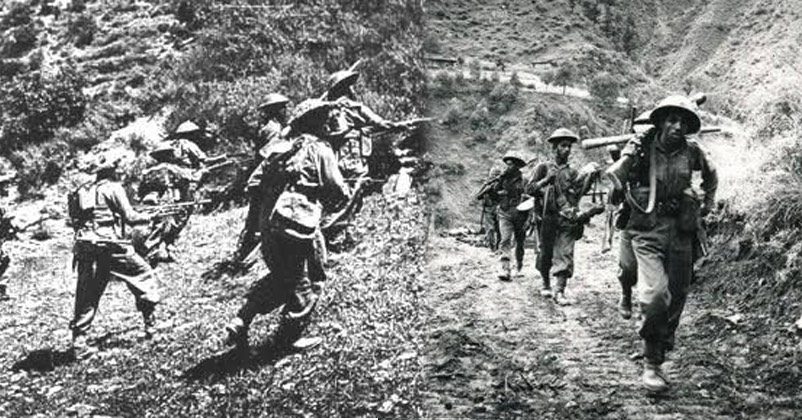23 November, 1948: Recapture of Kargil by Indian Forces from Pakistani invaders during Indo-Pak war of 1947-48
Total Views |

The Pakistani invasion of Jammu and Kashmir in 1947 occurred soon after the partition of British India. As the princely states were given the choice to join either India or Pakistan, Maharaja Hari Singh, the ruler of Jammu and Kashmir, chose to accede to India. This decision led to tensions, and tribal militias supported by Pakistani military invaded the region.
In response to the invasion, Maharaja Hari Singh sought military assistance from India, agreeing to accede to India in return. The Indian Government in response, dispatched troops to help defend the state.
Kargil, in Ladakh which fell to the Pakistani invaders in June 1948, was recaptured by the valiant Indian forces on 23 November, 1948.
The Pursuit to Kargil
The reclaiming of Drass on November 15, 1948, gave Sri Div a tenable position beyond the Zoji La. General Thimayya could leave a sizable garrison in Drass during the winter months and resume his advance in spring if necessary. But the danger to Leh could not be removed unless Kargil also was recaptured. The Kargil-Marol area controlled routes of the Indus valley, Suru valley and to Zoji La, and Kargil had more accommodation and supplies for a garrison than Drass had. For once the weather also was
proving exceptionally kind. It was decided, therefore, to push on as fast as possible and try to occupy Kargil as well as Marol before the heavy snowfall came.
The advance was resumed on 18 November. One coy of 1/5 RGR climbed up towards Umba La in order to reach Kargil via the Suru valley, but it found the track very difficult due to the snow, and had to return to Drass on 20 November. A coy of 1Patiala advanced down the Drass river valley, and reached Dandal on the evening of 18 November. No hostile parties were encountered, and the villagers 'en route' were peaceful and friendly. A few months of life under the invaders regime had cured them of their ignorant fanaticism, and they welcomed the return of Indian troops, though without ostentatious display.
On 19 November, the forward platoons of 1 Patiala occupied Shamsha and Khibar, and reached the major village of Kharbu. About 19 km more were thus covered without meeting any opposition. But the next day, the advancing troops were fired upon from a hostile position just north of Kharbu. They also captured a messenger sent by Major Qureshi, the local commander of the invaders, to the village headman of Kharbu, asking for some help. The headlong pursuit was halted, therefore, and 1Patiala consolidated its hold on Kharbu area and made preparations for overcoming the opposition On 21 November, the hostile position was attacked and captured, and the men of 1Patiala reached the junction of Drass and Shingo rivers Behind it, the Gorkhas werealso hurrying forward, and by that evening the whole of 1/5 RGR was concentrated at Kharbu.
The C coy of 1/5 RGR advancing along the right bank of the Drass made excellent progress. It reached within 6 km of Kargil on 22 November, but then it ran into an ambush. At Kharal the track to Kargil ran along the lower slopes of a narrow gorge, with the swift stream gliding at the bottom. There was a bridge at Kharal, over which the track went to Marol and onwards to Skardu. The advancing Gorkhas, perhaps grown a little careless due to the collapse of enemy opposition and hurrying on to enter Kargil, saw the Kharal bridge lying broken in the water and no enemy in sight. They came out in the open. Suddenly, a murderous fire burst at them from the opposite bank. The hostiles used several LMGs and MMGs from well-concealed positions, and within a few minutes eighteen Gorkhas lay dead or wounded where they stood.
Advance along the main track to Kargil was impossible without destroying the hostile position across the river at Kharal. So, attempts were made the same day, i. e 2 November, to cross the Shingo and drive away the invaders. Captain A K Kochar, a powerful swimmer, swam across the ice-cold river, but he was completely numb when he reached the far bank and had to revive himself in the humble hut of a friendly villager. Others tried to cross the river on small rafts, but the current proved too swift for them. So more planks were obtained from some houses about 5 km away, a bigger raft was built, and Bcoy of 1/5 RGR began ferrying itself over during the night of 22/23 November. Only one platoon had reached the left bank when the big raft broke up, but this platoon alone charged the hostile position and drove out the invaders. More Gorkhas then came across, and a firm position was established guarding the track from Marol.
While this spirited affair was going on at Kharal, another coy of 1/5 RGR was climbing straight up the 4270-metre mountain to reach Kargil by a short-cut. The slopes were steep and craggy, the track hardly existed, and the cold was intense. But the men marched on through most of the night, and entered Kargil at 0400 hours on 23 November. Close at their heels came Brigadier Atal himself with another (D coy)
Gorkha coy. The invaders had fled from Kargil, and no opposition was encountered. By the next morning (i. e. 24 November) 1/5 RGR held Kargil in strength. and one Gorkha coy guarded the Kharal bridge area to prevent any hostile attack on the track from Drass. Col Parab and his Leh Column also reached Kargil on 24 November. The link up with Leh was thus accomplished, and the safety of Ladakh assured.
(With inputs from History of Operations in Jammu and Kashmir (1947-48))

